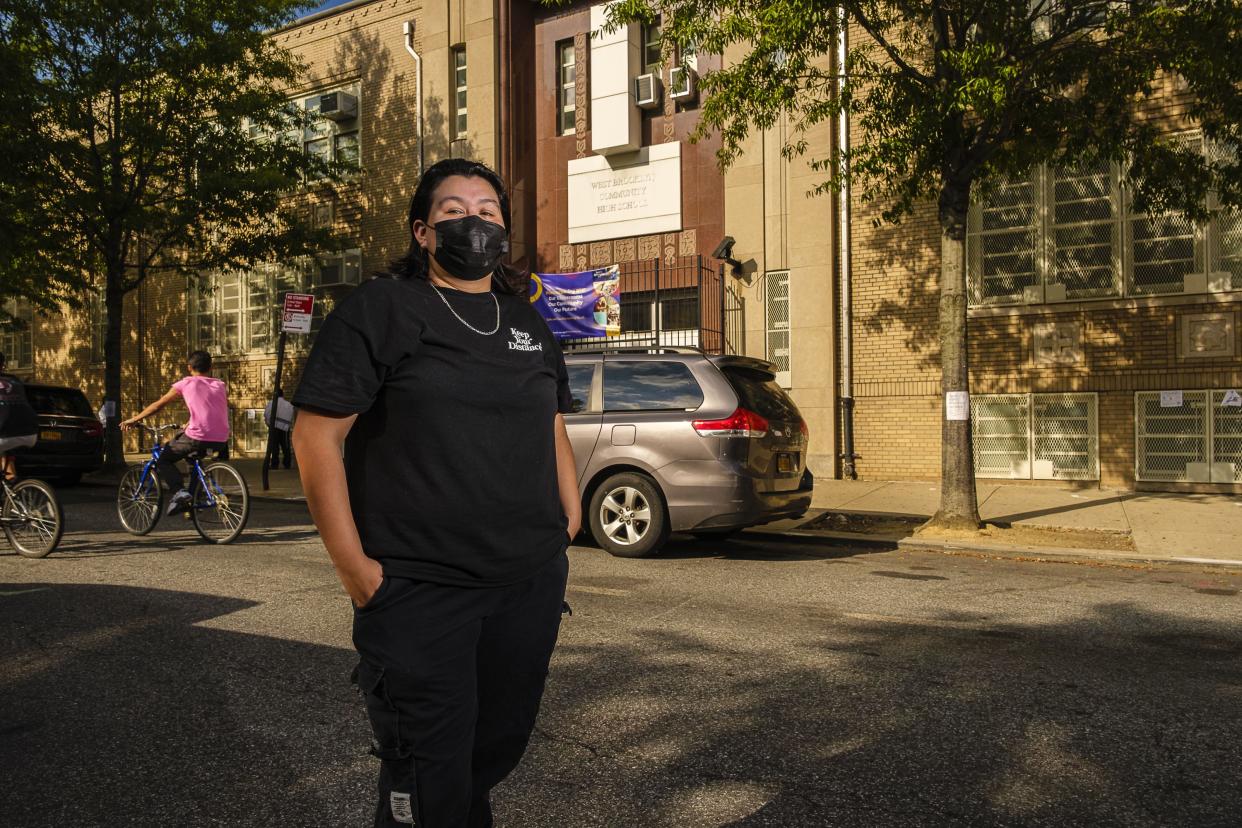NYC students who moved, got jobs during pandemic remote learning now face tough choices as in-person classes return

Remote classes weren’t 19-year-old Guerly Lizie’s favorite way to learn, but they allowed the West Brooklyn Community High School student to stay connected during the COVID-19 pandemic even as her life changed dramatically.
After Lizie’s mom lost her job early in the pandemic, the teen found full-time work at a home health aide agency so she could chip in, while squeezing in online schoolwork at night after work.
Then when Brooklyn rent prices became too much for the family to afford, Lizie moved to New Jersey with her mom and sister, figuring she could keep up with Zoom classes at West Brooklyn.
But now that city officials have mandated in-person classes for public school students, Lizie — two hours away from her Brooklyn high school — faces some wrenching choices.
“I had to consider the option of dropping out even though I only have a couple credits to make up,” Lizie said.
She said she thought about enrolling in the New Jersey district where she now lives, but learned the public schools there don’t accept new transfers who are 18 or older.
“I was like, ‘What do I do?’” she said. “That whole college dream just kind of went away, that was the hard part.”
Students across the city restructured their lives during the pandemic, finding the newfound flexibility of remote learning let them take on the long hours at paying jobs — or move. And while some students are having little trouble readjusting to in-person schooling, others are finding the switch back more complicated.
“I’m getting a larger number of requests for flexible programming, a lot of kids saying I want to start at 10, a lot of kids with jobs,” said a Manhattan principal who requested anonymity because she’s not authorized to speak publicly. “I think it’s a product of remote learning.”
Julian Lugo, 19, also at West Brooklyn, is also struggling to balance new job responsibilities with in-person school. He’s had a part-time job for years, but began working full-time as a grocery store cashier last year to help pay the bills that his single mom had been shouldering alone.
“I felt like I was able to do things as a man for my mother…It was a powerful thing for me,” he said.
He quickly discovered his six-day-a-week work schedule didn’t jibe with in-person attendance requirements: When he took off several days to attend his first week of school, he was fired.
“During this confusing time, it’s like what am I going to do?“ he said. “Do I go back? Do I work? Do I drop out? What do I do? That’s a very hard choice for a 19-year-old to make.”
Meanwhile, scores of other students left the city altogether for reasons ranging from economic necessity to childcare concerns to COVID fears — a tally school administrators are now noting as they comb through enrollment records.
“We’re following up with students and they’re like, ‘I moved to (Pennsylvania),’ I have one in Maine, Florida, two in the Dominican Republic,” said another Manhattan principal who spoke on the condition of anonymity.
Melissa Campos, a West Brooklyn student who departed for Scranton, Pa., last year with her parents because they were concerned about the COVID risks of sharing a cramped apartment with a large family, wanted to return to Brooklyn for her last year of school, but her parents weren’t ready to move back.
So Campos, 19, moved in with her older brothers in Brooklyn, a difficult decision that the family is adjusting to.
“In the end they supported me because they saw how much the school did for me…they’re coming this weekend to visit me,” she said.
Lizie said she can’t imagine re-entering the city’s expensive housing market after finding financial relief in New Jersey. But school officials at West Brooklyn are trying to figure out how to make it work and get her to the finish line.
“Our students’ lives have changed,” said Karen Dette, the school’s program director. “We’re just beginning to figure out how we can respond to those changes without compromising what we think is a quality education.”

